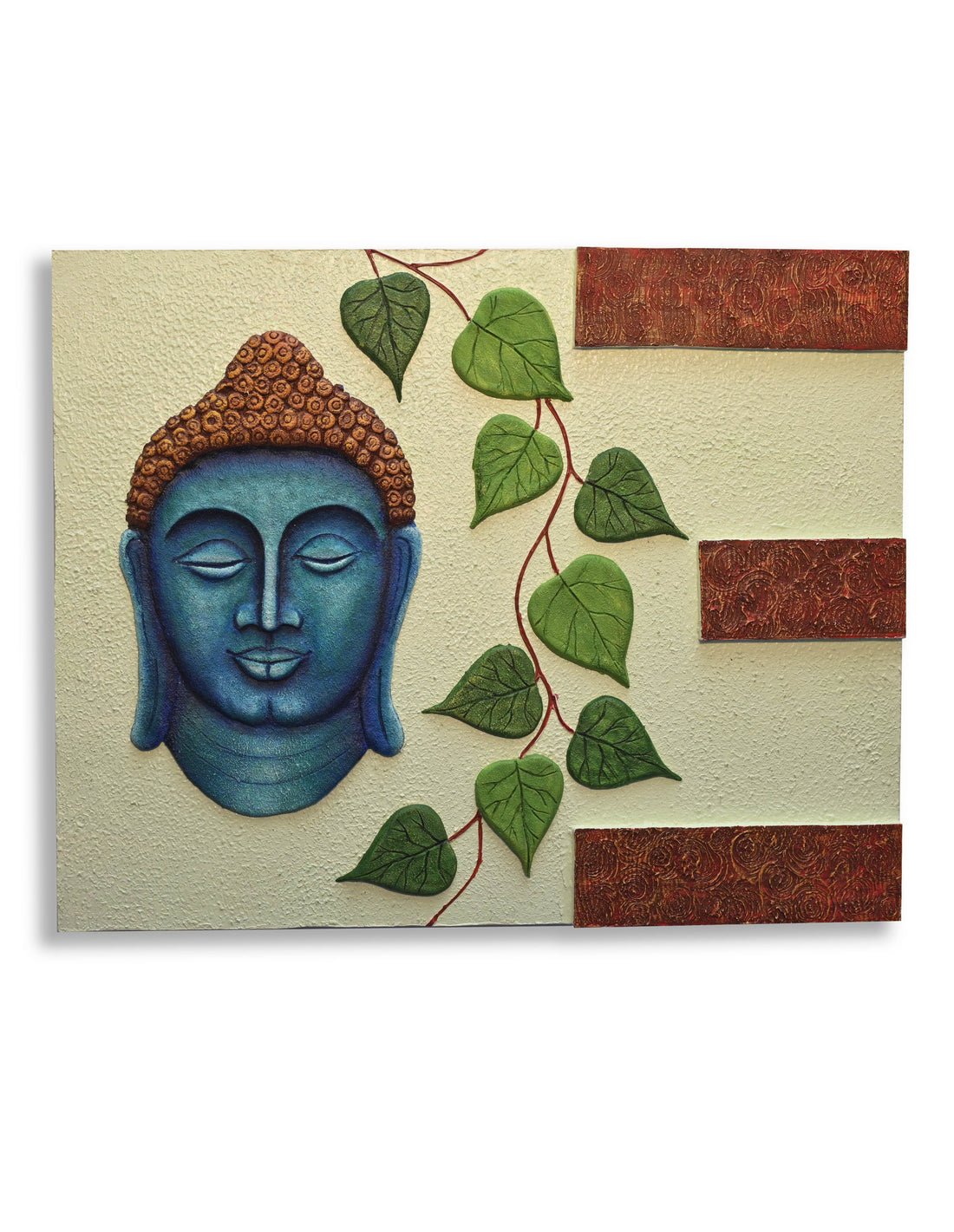
Discover the Beauty of 3D Wall Hanging Art by Crafia.com
Introduction
Buddha paintings have long been revered for their calming and spiritual presence. These artworks are often used in homes to create an atmosphere of peace and tranquility. With their deep symbolism, Buddha paintings can also serve as reminders of mindfulness and inner peace.
Whether you are an art enthusiast or looking to add a spiritual element to your space, Buddha paintings offer something for everyone. They come in various styles, from traditional depictions of the enlightened Buddha to contemporary abstract representations.
In this guide, we'll explore how to choose the right Buddha painting for your home, the meanings behind different styles, and how to seamlessly incorporate these beautiful pieces into your décor. Whether you're decorating a meditation room or adding a serene touch to your living area, this guide will help you make the right choice.
The Symbolism of Buddha in Art
Buddha paintings are more than just decorative pieces; they carry deep spiritual meanings. The image of Buddha represents enlightenment, compassion, and inner peace. His calm expression and meditative pose inspire viewers to reflect on their spiritual journey.
One of the most common symbols in Buddha paintings is the mudra, or hand gesture, which each has its own meaning. For example, the "Bhumisparsha Mudra," where Buddha touches the ground, symbolizes his connection to the earth and enlightenment. Similarly, the "Dharmachakra Mudra" represents teaching and the cycle of life.
When you choose a Buddha painting, it's essential to understand the symbolism behind the art. These meanings can influence the energy and atmosphere you bring into your space. Understanding these elements adds a deeper appreciation for the artwork.
How to Choose the Perfect Buddha Painting for Your Space
Selecting the right Buddha painting depends on several factors, including the style, size, and placement of the artwork. First, consider the overall ambiance you want to create. A meditative Buddha in soft tones works well in a relaxation area, while vibrant, contemporary Buddha art can make a bold statement in a living room.
Next, think about the size of the painting. A large Buddha painting can become the focal point of a room, while smaller pieces can complement other elements in the space. The color scheme should also match the room's décor to maintain harmony.
Finally, placement is key. Buddha paintings are often placed in spaces meant for relaxation, meditation, or reflection, such as bedrooms or home offices. Avoid placing the artwork in areas that may be cluttered or chaotic, as this can detract from its calming effect.
Buddha Paintings for Meditation and Spiritual Growth
A Buddha painting can be a powerful tool for meditation and spiritual growth. When positioned in a quiet space, it can help create a peaceful environment that promotes mindfulness. The serene expression of the Buddha reminds us to cultivate inner calm and focus on our breath.
In a meditation room, opt for a painting that emphasizes tranquility. Traditional depictions of Buddha in a meditative posture or with closed eyes are ideal for these settings. The colors of the painting can also enhance your practice; soft blues and greens are soothing, while warm tones like gold and yellow radiate positive energy.
For those on a spiritual journey, Buddha paintings serve as daily reminders to stay grounded and connected to their inner selves. By choosing art that resonates with your spiritual goals, you can create a space that nurtures growth and mindfulness.
Different Styles of Buddha Art and Their Meanings
Buddha paintings come in various styles, each carrying its own unique meaning and aesthetic. Traditional Buddha art, often seen in temples, focuses on classical representations of the enlightened one, capturing moments from his life and teachings.
On the other hand, contemporary Buddha paintings take a more abstract approach. These modern pieces use bold colors, geometric shapes, and non-traditional textures to convey spiritual messages in a fresh way. Some paintings might focus only on Buddha's face, highlighting the peaceful expression and the eyes that seem to look inward.
Choosing between traditional and contemporary Buddha art depends on your personal style and the atmosphere you want to create. Each style offers its own form of beauty, allowing you to pick a piece that resonates with your aesthetic and spiritual vision.
Tips for Incorporating Buddha Paintings into Home Décor
Incorporating Buddha paintings into your home décor requires careful thought to maintain balance and harmony. Begin by choosing a space that feels calm and uncluttered, as this will allow the artwork to shine.
Consider the theme of the room. A minimalist design pairs well with simple, neutral-toned Buddha art, while a more eclectic space can benefit from a vibrant, eye-catching piece. It's important to maintain balance—too much color or complexity can overwhelm the serene energy that Buddha paintings bring.
Lighting also plays a role in enhancing the artwork. Soft lighting that casts a warm glow on the painting can elevate its calming effect. Whether you hang it in a living room, bedroom, or meditation space, Buddha paintings bring a sense of peace and spiritual depth to your home.


